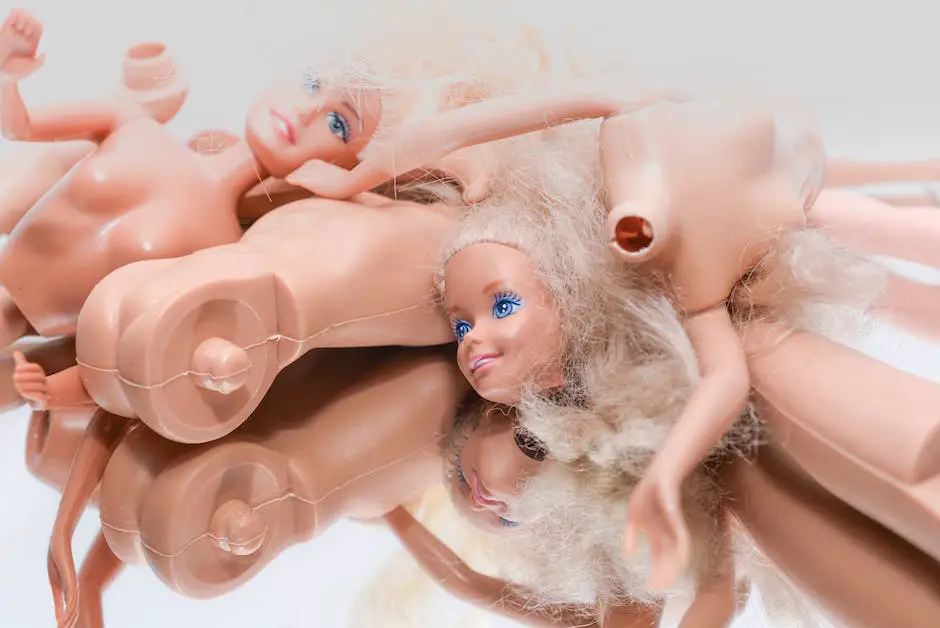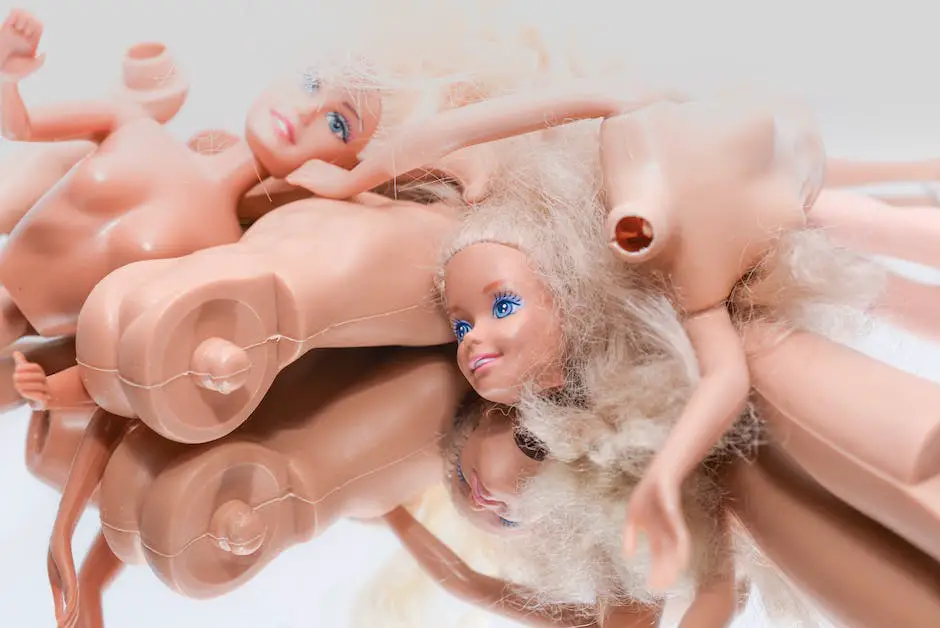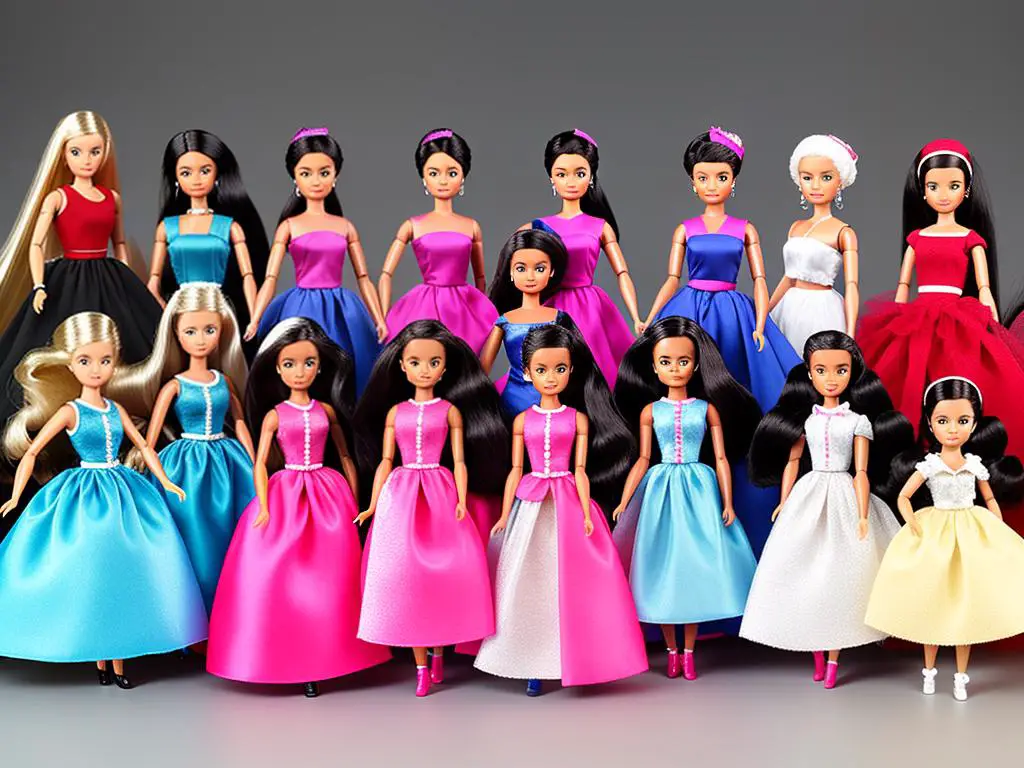With her signature hourglass figure and flowing blonde hair, Barbie is inarguably one of the most recognizable figures of the 20th century. Emerging in the 1950s, this small plastic doll has transcended toy aisles to leave an indelible mark on society and culture around the world. This exploration dives into the history of Barbie right from its inception, its cultural impacts, controversies, and the evolution to presently symbolize diversity and body positivity. Furthermore, it navigates the intriguing world of Barbie doll collecting, discussing the value determination of these dolls and their global appeal as collector’s items.
History of Barbie
Inception of America’s Iconic Doll
Barbie, the world’s best-selling doll, was first conceived by co-founder of Mattel, Inc., Ruth Handler. Inspired by watching her daughter, Barbara, playing with adult-like paper dolls, Handler envisioned creating a 3-dimensional adult-bodied doll where girls could act out their dreams of the future. Handler’s husband, Elliot, and his business partner Harold “Matt” Matson, initially resisted the idea, believing it wouldn’t sell due to its distinct departure from the conventional doll design held during the 1950s. However, during a family trip to Europe in 1956, Handler came across a doll named Bild Lilli that closely resembled her envisioned plan. This doll became the prototype of Barbie, which was subsequently named after their daughter Barbara.
The Groundbreaking Origin and Evolution of Barbie
On March 9, 1959, after an initial rejection from Mattel’s designers, Barbie made her debut at the American International Toy Fair in New York City. Donning a black and white striped swimsuit and a signature ponytail portraying a grown-up avatar, she was a complete contrast to the infant and toddler dolls that dominated the market back then. With her progressive looks and design, Barbie quickly became a revolutionary figure, paving the way for a more modern representation of girls’ dolls and inspiring them to envisage themselves in adult roles.
In the first ten years following her launch, Barbie’s transformations aptly mirrored the swift societal growth and revolution of the 1960s. She took on various roles such as an astronaut, a surgeon, a Pan Am stewardess, and even Miss America, shunning the prevailing traditional depiction of women. Barbie set the precedent for a new style of toy that inspired girls to see themselves in various professional roles, a concept that was groundbreaking during that period.

Photo by jakegrella on Unsplash
Cultural Impact of Barbie
Barbie’s Significant Cultural Impact
From the moment of its creation in 1959 by Ruth Handler, Barbie has been more than just a popular doll; she has been a notable cultural influencer worldwide. Her appeal wasn’t limited by borders or cultures, as she offered kids an adult-themed pattern of play, a complete deviation from the infant dolls prevalent in those times. Besides being a fashion icon and a girlfriend, Barbie’s multiple roles also included a range of socially and professionally significant ones, serving as a platform for kids to envisage their potential future paths. Indeed, Barbie’s ability to let kids act out their fantasies, coupled with her diverse representations of cultures, societal roles, and vast career choices, have cemented her status as a cultural symbol that reflect social progress and personal aspirations.
Barbie’s Impact and Evolving Image
As a cultural phenomenon, Barbie has encouraged both admiration and critique. Despite her popularity as a sign of societal change, Barbie has faced backlash for embodying unrealistic beauty standards. Detractors have pointed to her initial body dimensions, glamorous lifestyle, and predominantly white, blonde representation as potential influencers of negative body image and racial stereotypes among young girls. In response, Mattel has broadened Barbie’s range to include dolls with different skin tones, body shapes, and professions. Despite the controversies, the worldwide allure of Barbie endures, underlining her role as not merely a toy, but a platform for critical conversations on diversity, gender roles, and body perception. Over time, Barbie has become a symbol of women’s empowerment, evolution, and resilience against shifting societal norms.

Barbie Today
Barbie’s Transformation: A Symbol of Diversity and Inclusion
The metamorphosis of Barbie over the past several decades has been notably radical for the toy industry. Originating over sixty years ago as a classic blonde, blue-eyed doll, Barbie now exemplifies a broad cross-section of society, in a testament to the brand’s commitment to diversity and inclusivity. Steps towards this goal can be seen in recent additions to the line, encompassing dolls of differing ethnicities, professional backgrounds, abilities, and physical appearances.
Barbie’s Role in Advocating Body Positivity
Another prominent stride in Barbie’s evolution has been toward advocating body positivity. Responding to years of criticism for promoting an unrealistic body image, Mattel, the company that makes Barbie, introduced the Fashionistas line in 2016. This range includes dolls with a variety of body types — petite, curvy and tall, diversifying from the traditional slender and tall physique that was synonymous with Barbie. This product line revolution underscores the message that beauty comes in all shapes and sizes and resonates with the modern ethos of body positivity.
The Evolution of Barbie: From Careers to Design
Barbie has seen striking transformations since her inception, not just in terms of physical appearance, but also in her professional persona. With a resume boasting over 200 diverse careers, covering roles from a presidential candidate and astronaut to a firefighter and, more recently, a robotics engineer, Barbie reflects shifting societal norms and aims to inspire young girls to aspire beyond conventional gender roles. But evolution doesn’t stop there: Barbie’s contemporary design now features more realistic clothing, accessories, and physiology, mirroring the diversity seen in the real world. This continued growth and adaptation underpin Barbie’s enduring popularity and relevance in today’s ever-changing society.

Collectibility and Value of Barbie Dolls
The Collectible Appeal of Barbie Dolls
Since Barbie’s arrival on the toy scene in 1959, these dolls have captured the fascination of collectors worldwide. A major aspect of their allure is the sheer diversity of the Barbie range- encompassing various careers, cultures, fashion eras, and iconic film characters. However, the collector’s interest increases exponentially when it comes to rarity and exclusivity. Limited edition Barbies, or those with minor production anomalies, are in high demand due to their scarcity. Additionally, vintage Barbies, particularly those unopened and in their original packaging, or boasting unique features, are treasured gems in the collector’s world.
Determining the Value of Barbie Dolls
The value of Barbie dolls can be determined by several factors. The doll’s age, rarity, condition, and overall demand within the collector’s market can all play a part. For example, an original 1959 Barbie in pristine condition can command a price of several thousand dollars. Limited edition Barbies, such as the Pink Splendor Barbie that was retailed at $900 and the Marie Antoinette Barbie that can fetch up to $1,250, also have considerable value due to their exclusive nature.
Tips for Barbie Doll Collectors
For those interested in Barbie doll collecting, it’s essential to remain knowledgeable about the dolls’ histories and variations. Keeping informed about the market prices for different models can ensure you accurately assess the value of potential additions to your collection. Condition is often key in determining a Barbie doll’s worth; dolls in their original packaging, for those with all original accessories intact, typically command the highest prices. It’s recommended to handle the dolls with care and to store them properly to maintain their condition. Collecting Barbie isn’t just about monetary value; many collectors enjoy the nostalgia and the celebration of fashion, pop culture, and diversity that these dolls represent.

Through the years, Barbie has transcended her plastic confines, emerging as a mirror reflecting societal trends and evolving notions of beauty and success. In her myriad avatars, from astronaut to president, she embodies the potential within every young girl. While her impact has at times stirred controversies, Barbie has adapted, championing diversity and inclusivity in the process. The collectability of Barbie dolls also underscores their enduring appeal, each rare variant carrying a unique story. Through all this, one thing is clear: Barbie’s influence extends far beyond the realms of toy chests and onto the larger world stage, shaping and reflecting cultural narratives for over six decades now.
